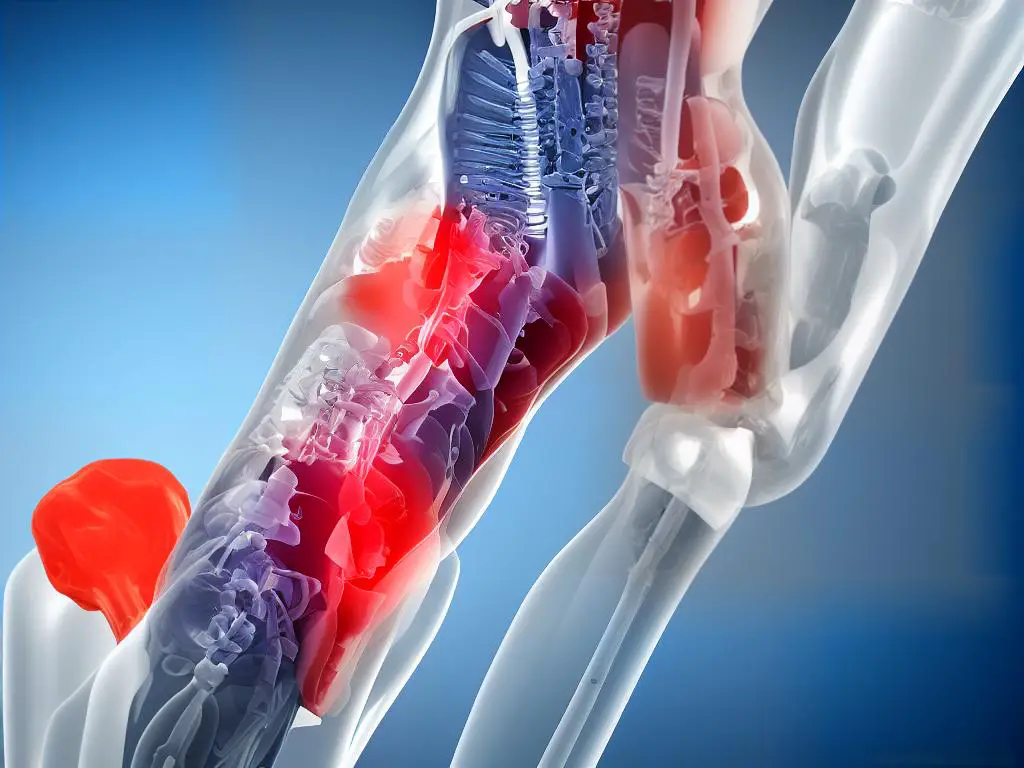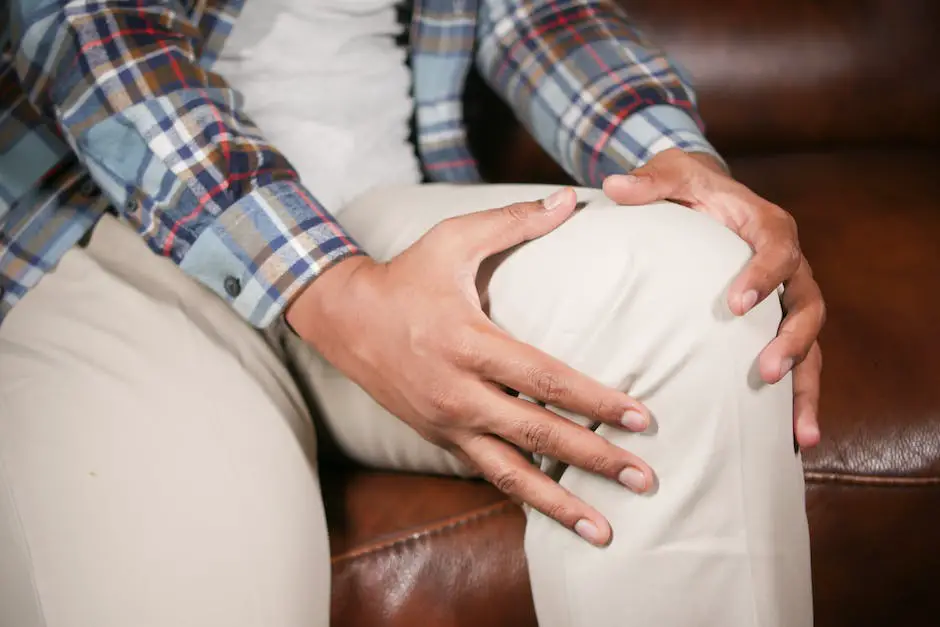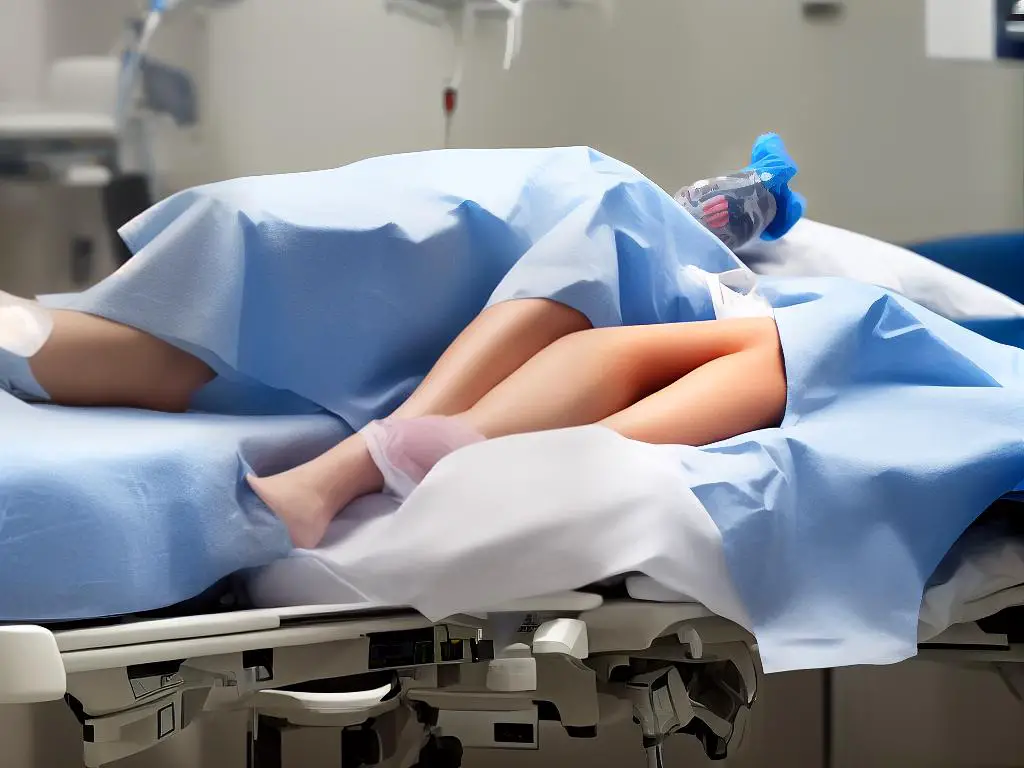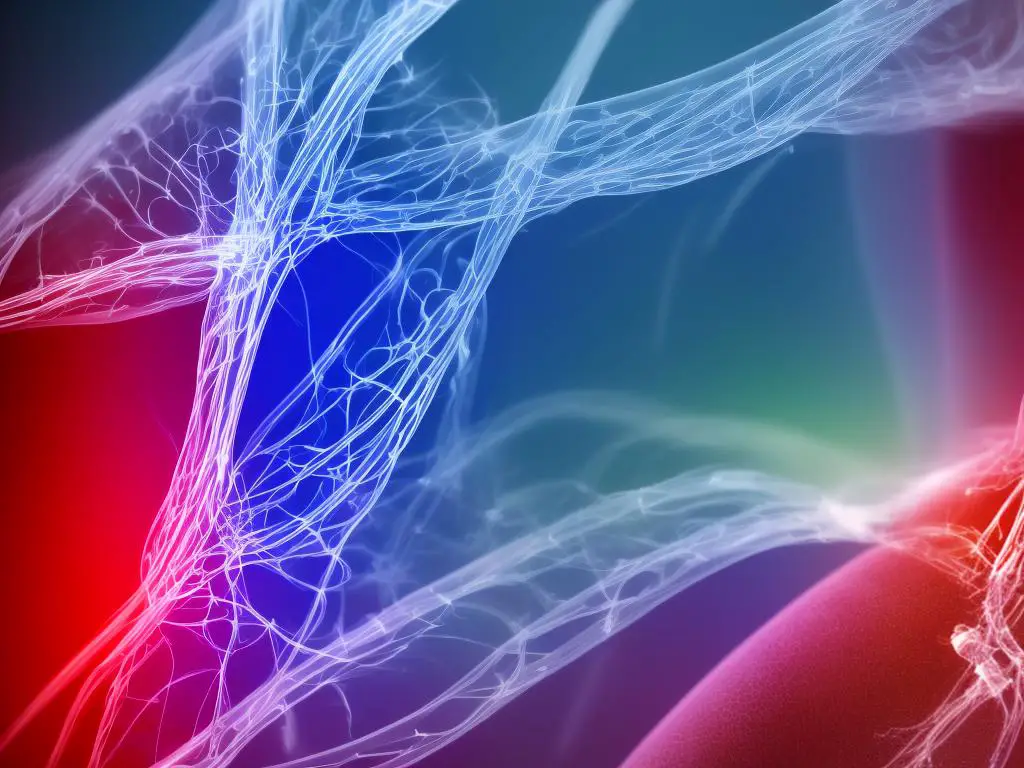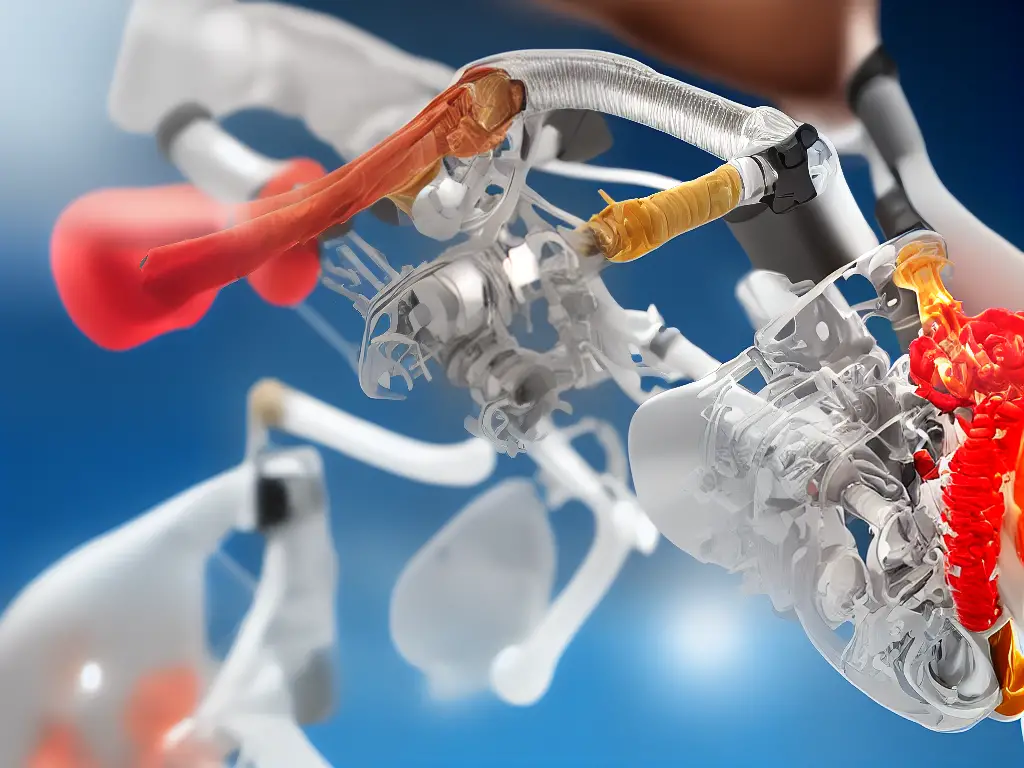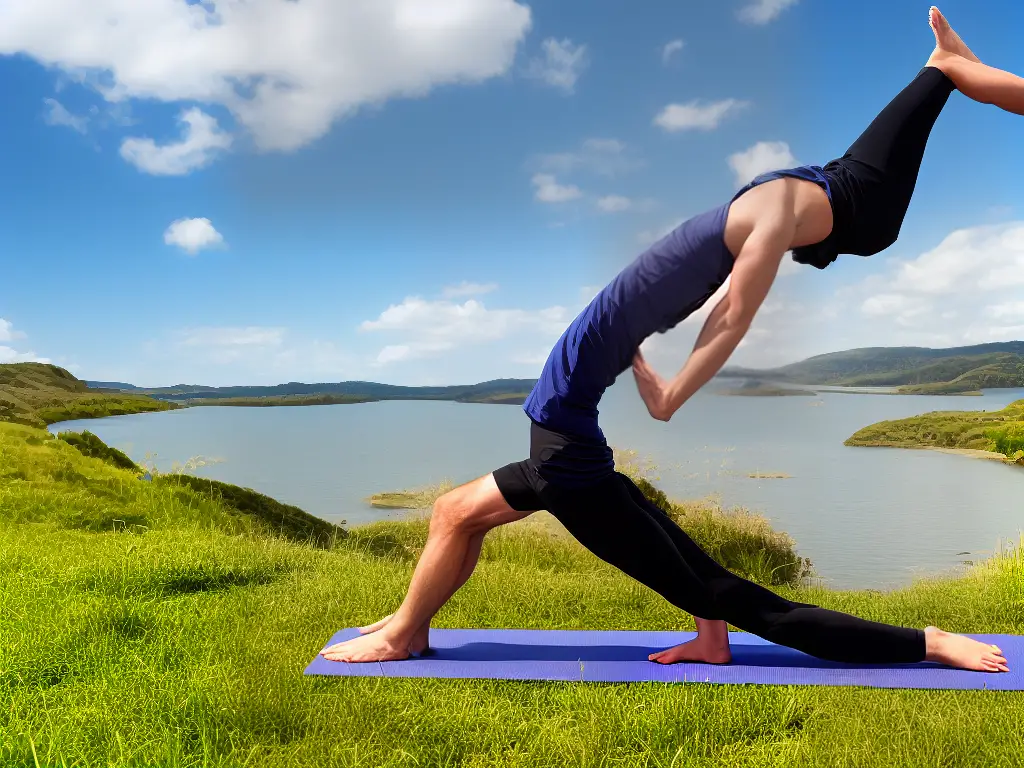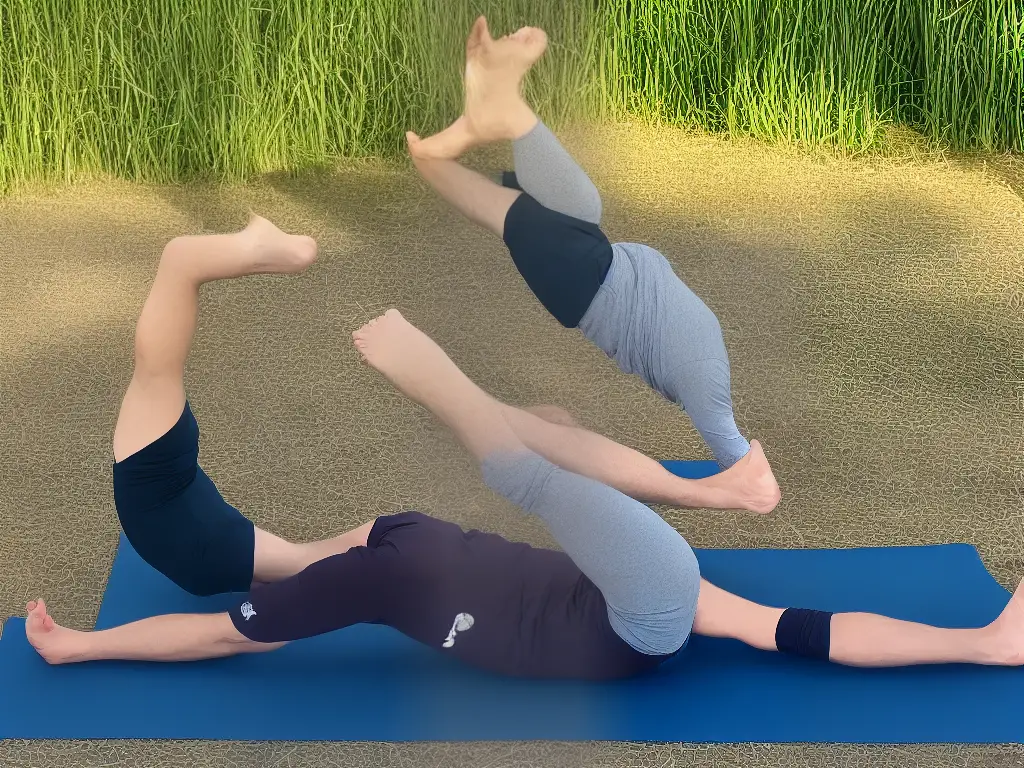Arthritis is a prevalent condition that affects millions of people worldwide, and knee pain is one of the most common symptoms experienced by those who suffer from this ailment. To foster a deeper understanding of the connection between arthritis and knee pain, it is essential to explore the intricate anatomy of the knee, the different types of arthritis that can impact this joint, and the various factors that contribute to the development and progression of this disorder. Gaining knowledge about prevention strategies, diagnostic methods, treatment options, alternative therapies, and coping mechanisms will empower individuals to make informed decisions about their joint health and maintain an optimum quality of life.
The Complex Structures of the Knee Joint
The knee is a complex and crucial joint in the human body that plays a crucial role in facilitating movement. It is composed of several structures, including bones, ligaments, tendons, and cartilage.
The bones that make up the knee joint include the femur (thigh bone), tibia (shin bone), and patella (knee cap). These bones provide stability and support to the knee and help bear the body’s weight during usual activities like walking, running, and jumping. Any damage to these bones can influence one’s ability to perform daily activities and may lead to the development of arthritis and knee pain.
In addition to bones, the knee also has a complex network of ligaments that connect the bones, providing stability and promoting smooth knee movements. There are four major ligaments in the knee: the anterior and posterior cruciate ligaments (ACL and PCL), which provide stability in the front and back of the knee, and the medial and lateral collateral ligaments (MCL and LCL), which provide stability to the inner and outer sides of the knee. When these ligaments become damaged or injured, they may contribute to knee instability, potentially leading to conditions like arthritis over time.
Tendons also play a crucial role in the function of the knee joint. These fibrous connective tissues attach muscles to bones, facilitating movement. The two main tendons in the knee are the quadriceps tendon, which connects the quadriceps muscle to the patella, and the patellar tendon, which connects the patella to the tibia. Degradation or overuse of these tissues may contribute to knee pain and the development of arthritis.
Synovial fluid and cartilage also contribute to the smooth functioning of the knee. A membrane called the synovial membrane lines the inside of the knee joint and produces synovial fluid, which acts as a lubricant, reducing friction between the different structures and allowing for smooth movement. Cartilage, a tough, semi-rigid connective tissue, provides cushioning between the bones in the joint, acting as a shock absorber during physical activities. Two types of cartilage are found in the knee: articular cartilage, which covers the ends of the bones and menisci, two C-shaped pieces of cartilage that sit on top of the tibia and act as additional shock absorbers.
Under normal circumstances, the various components of the knee work together to provide stability, support, and promote movement. However, any damage or abnormality in these structures can lead to knee pain and may eventually result in arthritis. This condition is characterized by the wearing away of articular cartilage, inflammation of the synovial membrane, and the formation of bony growths called osteophytes. Arthritis can severely impact an individual’s quality of life, as the associated knee pain can make simple everyday activities like walking or climbing stairs increasingly difficult and painful.
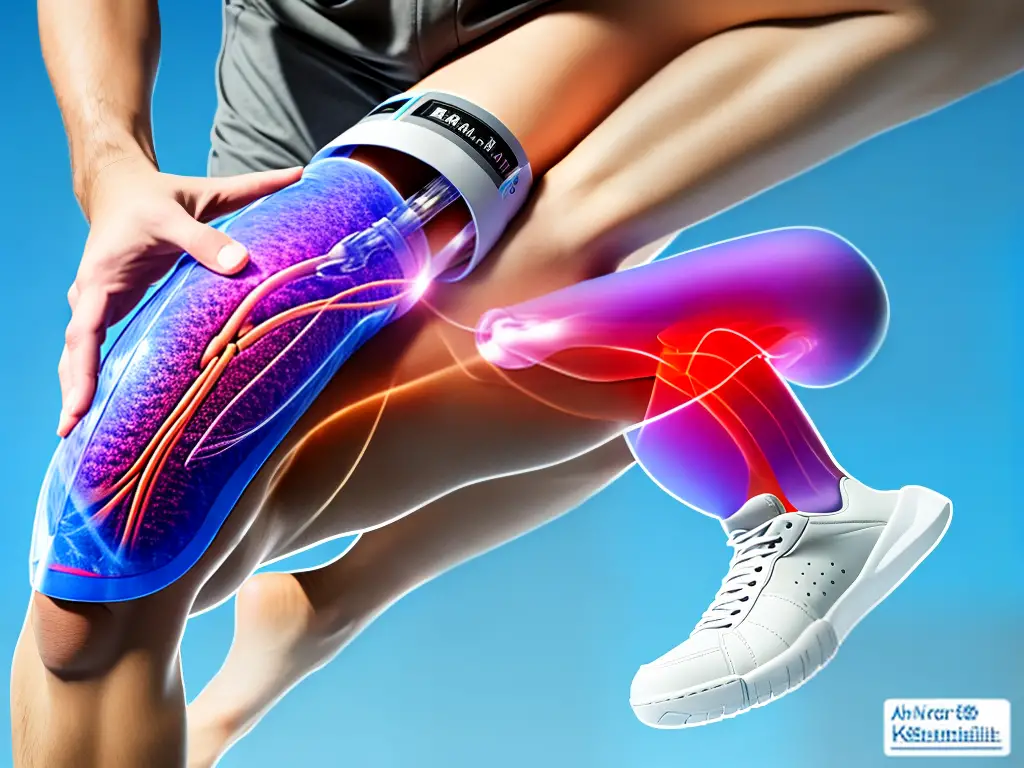
Understanding Arthritis and Knee Pain
Arthritis, which affects millions of people worldwide, is a common condition characterized by inflammation and pain in joints, such as the knee. The most prevalent types of arthritis that can cause knee pain are osteoarthritis and rheumatoid arthritis. Understanding the link between these forms of arthritis and knee pain is crucial for managing the condition and maintaining a good quality of life.
Osteoarthritis, also known as degenerative joint disease, is a chronic condition that can progressively worsen over time, ultimately leading to severe knee pain, stiffness, and a restricted range of movement. The risk factors for developing osteoarthritis include advanced age, genetic predisposition, obesity, previous joint injuries, and repetitive stress on the joint. This type of arthritis often develops gradually, with symptoms becoming more noticeable as the cartilage in the knee joint breaks down and the bones rub against each other, causing pain and inflammation.
Rheumatoid arthritis is an autoimmune disease that causes the body’s immune system to mistakenly attack its own joint tissues, leading to inflammation and pain in the knee. This is a systemic disease that can affect many joints in the body, not just the knee. The condition is characterized by the immune system producing inflammatory substances that attack the synovial membrane—the lining of joints. This can cause redness, swelling, and pain in the knee, as well as other affected joints. Over time, the inflammation can also damage the cartilage and bone within the joint, leading to further pain, deformity, and loss of joint function.
Diagnosing and treating arthritis early is essential for managing knee pain and preventing further joint damage in the long run. To diagnose arthritis, doctors may use various diagnostic tools, such as physical examination, medical history, blood tests, and imaging studies like X-rays and MRIs. Treatment options for both osteoarthritis and rheumatoid arthritis include lifestyle changes (such as weight loss and low-impact exercise), pain relief medications, physical therapy, and even joint replacement surgery in severe cases. It is crucial to work closely with a healthcare professional to determine the best course of action for managing arthritis-related knee pain.

Knee Pain in Arthritis Patients
One of the main reasons knee pain is common in individuals with arthritis is due to joint inflammation. Arthritis is an inflammatory condition that affects the joints, resulting in swelling, pain, and stiffness. This inflammation can be caused by various types of arthritis such as osteoarthritis, rheumatoid arthritis, or gout. Inflammatory chemicals released by the immune system, called cytokines, are responsible for damaging joint tissues, which in turn leads to the knee pain experienced by many arthritis patients. Addressing the root cause of inflammation and incorporating the necessary treatment options mentioned previously are critical steps in mitigating arthritis-related knee pain and improving overall comfort and mobility in affected individuals.
Another cause of knee pain in arthritis patients is cartilage breakdown. Cartilage is a flexible and protective tissue that covers the ends of bones inside the joint, acting as a cushion and reducing friction during joint movement. Over time, arthritis can cause the cartilage in the knee joint to erode, resulting in increased bone-on-bone contact. This contact can lead to pain, stiffness, and decreased mobility in the affected knee. The progressive loss of cartilage is a significant factor contributing to knee pain in osteoarthritis patients, as this form of arthritis primarily targets the cartilage.
In addition to inflammation and cartilage breakdown, changes in joint alignment can also contribute to arthritis-related knee pain. Joint alignment refers to the optimal positioning of bones within a joint, allowing for smooth and pain-free movement. As arthritis progresses, it can lead to alterations in joint alignment, placing additional strain on certain parts of the joint, including the knee. This altered alignment can, in turn, exacerbate pain and contribute to further joint damage.
Ligament, tendon, and muscle weakness can also play a role in arthritis-related knee pain. In response to joint instability and pain, surrounding muscles and connective tissues may weaken, providing less support and stability to the affected joint. Weak or tight muscles can alter the way forces are distributed across the joint, leading to increased stress and pain in specific areas of the knee. Furthermore, muscle imbalances and weakness can contribute to abnormal joint movements, increasing the risk of further joint damage.
In order to effectively manage arthritis-related knee pain, it is crucial to explore the various factors that contribute to discomfort, such as joint inflammation, cartilage breakdown, changes in joint alignment, and muscle weakness. By utilizing a combination of medications, exercise, and lifestyle modifications, one can target these causes and potentially alleviate knee pain, improving overall joint health. This multi-faceted approach can provide relief for individuals with arthritis and enhance their daily function and quality of life.

Preventing Arthritis and Managing Knee Pain
One key aspect of managing knee pain and preventing arthritis is weight management. Carrying excess weight puts added stress on the knee joints, increasing the likelihood of developing arthritis. Research has demonstrated that even small weight loss efforts can significantly reduce strain on the knee joints, resulting in decreased pain and increased mobility. Additionally, maintaining a healthy weight can aid in preventing the onset of arthritis and slowing down its progression, further contributing to reduced knee pain and improved joint health.
Exercise plays a crucial role in preventing arthritis and managing knee pain. Regular physical activity helps to strengthen the muscles that support the knee joint and improve joint flexibility. Low-impact exercises such as walking, swimming, and cycling are ideal for people with knee pain, as they place less stress on the joint than high-impact activities like running or jumping. Additionally, exercises that specifically target the quadriceps and hamstrings can be beneficial in maintaining knee stability and reducing pain. Consult with a healthcare professional or exercise physiologist to create a tailored exercise program that works best for you.
Maintaining good joint health is another important strategy in preventing arthritis and managing knee pain. This can be achieved through a combination of proper nutrition and joint-friendly activities. Consuming an anti-inflammatory diet rich in foods such as fish, nuts, and fruits and vegetables can help combat inflammation, which is a significant factor in arthritis development. Additionally, engaging in joint-friendly activities like yoga and tai chi can help maintain joint flexibility and minimize joint stress.
Early intervention and appropriate management of knee injuries can also help prevent the onset of arthritis. In the case of a knee injury like a ligament tear or meniscus damage, appropriate medical care and rehabilitation are crucial in minimizing joint damage and reducing the risk of developing arthritis. Individuals experiencing ongoing or recurrent knee pain should consult with a healthcare professional to determine appropriate treatment and management strategies.
Preventing arthritis and managing knee pain involves a combination of healthy habits and proactive strategies. Maintaining a healthy weight, staying physically active, ensuring good joint health, and promptly addressing knee injuries can help individuals lower their risk of developing arthritis and effectively manage knee pain. Consulting with healthcare professionals is essential to develop a personalized plan to prevent arthritis and maintain the best possible knee health.

The Link Between Arthritis and Knee Pain: Diagnosis and Evaluation
A crucial aspect of this process is understanding the link between arthritis and knee pain through early and accurate evaluation and diagnosis by healthcare professionals. Proper diagnosis not only helps in managing knee pain effectively but also prevents further joint damage. By staying informed and collaborating with healthcare providers, individuals can better manage the relationship between arthritis and knee pain, ensuring a healthier, pain-free life.
To achieve this, healthcare providers employ several techniques, including imaging studies, blood tests, and physical examinations, to determine the cause of the pain and recommend an appropriate treatment plan.
Imaging Studies
Imaging studies, such as X-rays, magnetic resonance imaging (MRI), and ultrasound, are useful diagnostic tools that help visualize the internal structure of the knee joint. X-rays generate images of the bones and can reveal changes in the joint’s structure, such as erosion, joint space narrowing, and the possible presence of bone spurs, which are indicators of osteoarthritis. MRI scans provide more detailed images of the soft tissues and cartilage, which can help identify injury or inflammation in the knee joint that may be caused by rheumatoid arthritis or other forms of inflammatory arthritis. Ultrasound imaging allows healthcare professionals to assess joint fluid, inflammation, and the overall health of tendons and ligaments surrounding the knee.
Blood Tests
Blood tests are another essential component of the arthritis evaluation and diagnosis process. Various biomarkers can help identify underlying systemic inflammation or specific types of arthritis. For instance, a blood test for C-reactive protein (CRP) typically shows elevated levels in individuals with active inflammation. Erythrocyte sedimentation rate (ESR) is another blood test that helps detect inflammation in the body, and it can be useful in monitoring the progress of inflammatory arthritis. Specific antibodies, such as rheumatoid factor or anti-citrullinated peptide (anti-CCP) antibodies, can help healthcare providers diagnose rheumatoid arthritis or make a distinction between different types of arthritis.
Physical Examinations
Physical examinations provide valuable information for diagnosing arthritis-related knee pain. A healthcare professional will assess the affected knee’s range of motion, stability, strength, and the presence of joint crepitus (crackling sounds). The practitioner may also check for joint swelling or warmth, which could indicate inflammation. During the physical examination, the healthcare provider may ask the patient to perform specific tasks, such as walking or squatting, which help evaluate the overall function of the knee joint and identify potential instabilities or mechanical issues.
Patient History and Self-Reported Symptoms
Healthcare professionals rely on patient history and self-reported symptoms to play a critical role in the diagnosis process of arthritis-related knee pain. They may inquire about the onset, duration, intensity, and nature of the knee pain, and whether the pain worsens with activity, improves with rest, or if there is a history of injury. This information is crucial in determining the appropriate course of action. By combining patient history, physical examination findings, and diagnostic testing results, healthcare professionals can effectively diagnose and devise a tailored treatment strategy to manage this condition.

Treatment Options for Arthritis and Knee Pain
Arthritis is a leading cause of knee pain in adults, causing inflammation and degeneration of the knee joint. Osteoarthritis and rheumatoid arthritis are the most common types, often resulting in pain, stiffness, and reduced mobility. As our understanding of the link between arthritis and knee pain becomes clearer from patient history and diagnosis processes, a wide range of treatment options have become available to help manage the symptoms and improve the quality of life for individuals suffering from this debilitating condition.
Medications play a crucial role in managing arthritis and associated knee pain. Over-the-counter pain relievers such as acetaminophen or ibuprofen are commonly used to control mild pain and inflammation. For more severe cases, prescription medications such as COX-2 inhibitors and corticosteroids may be necessary. These drugs work by reducing inflammation, pain, and swelling in the joints. It is essential to consult with a healthcare professional to determine the appropriate medication and dosage based on individual needs.
Physical therapy is another vital aspect of managing arthritis and knee pain. A trained physical therapist can develop a personalized exercise program to strengthen the muscles around the affected joints, increase flexibility and range of motion, and improve overall joint function. Low-impact aerobic exercises and stretching techniques are usually recommended to minimize pain and maximize the benefits of physical therapy. Additionally, weight management and maintaining a healthy lifestyle can significantly alleviate the strain on knee joints, leading to reduced pain and improved function.
Wearing braces and using joint supports can provide relief from arthritis and knee pain as well. Knee braces or sleeves can help stabilize the joint, reduce pressure, and alleviate pain during daily activities. There are various types of braces available, such as neoprene sleeves, hinged braces, wraparound braces, and customized braces. It is essential to choose the right brace or support after consulting with a healthcare professional to determine the best option based on the severity of the condition and specific needs.
In some cases, surgical interventions might be necessary when conservative treatment options fail to provide adequate relief from arthritis and knee pain. Arthroscopy, osteotomy, and joint replacement are some of the common surgical procedures performed to treat severe arthritis. Arthroscopy involves the removal of damaged cartilage and tissues using a small camera and specialized instruments. Osteotomy is a procedure that realigns the bone to redistribute weight on the joint, thus reducing pressure and pain. Joint replacement surgery, also known as arthroplasty, involves replacing the damaged joint with an artificial one made of metal or plastic components. These surgical options should be evaluated in consultation with a qualified medical professional, taking into account the risks and benefits.

Alternative Therapies for Arthritis and Knee Pain
While surgical interventions may be necessary in some cases, alternative and complementary therapies are increasingly being utilized to manage arthritis and knee pain more holistically. One such therapy is acupuncture, a traditional Chinese medicine technique that involves inserting thin needles into specific points in the body to maintain the balance of energy flow, or Qi. Research has shown that acupuncture can be effective in reducing inflammation, enhancing joint mobility, and relieving pain in arthritis patients. This approach, along with other alternative therapies, can provide relief and foster overall well-being for individuals suffering from arthritis-related knee pain.
Supplements are another alternative therapy utilized by individuals with arthritis and knee pain. Glucosamine and chondroitin, usually taken in combination, are the most popular supplements for joint health. They are believed to help rebuild cartilage and lubricate joints, thus reducing pain and increasing flexibility. Moreover, fish oil supplements containing omega-3 fatty acids have been found to possess anti-inflammatory properties, which may help alleviate arthritis symptoms. It is essential to consult a doctor before starting any new supplement regimen, as some may have potential side effects or interact with other medications.
Mind-body techniques encompass various approaches designed to enhance the connection between the mind and the body while promoting relaxation and healing. Examples of such techniques include meditation, deep breathing exercises, guided imagery, and progressive muscle relaxation. Studies have demonstrated the effectiveness of mindfulness meditation in reducing pain and stress levels in arthritis sufferers. Mind-body therapies can help patients learn how to cope with pain by teaching relaxation techniques and promoting awareness of the correlation between thoughts, emotions, and bodily sensations.
Physical therapy and exercise regimens are equally crucial components of alternative therapies for arthritis and knee pain. Regular physical activity can help strengthen muscles supporting the joints, improve flexibility, and increase overall fitness. Gentle, low-impact exercises, such as swimming, walking, and yoga, can be particularly beneficial for arthritis patients without exacerbating their pain. Under the guidance of a qualified physical therapist, individualized programs tailored to one’s specific needs will be developed, which may also include the use of assistive devices to make daily activities less challenging.
Maintaining good posture and employing ergonomic principles in daily life can be significant contributors to pain management for adults with arthritis and knee pain. Proper body mechanics, such as bending and lifting correctly, can help protect joints and alleviate stress. Making modifications to one’s living and workspaces, like using supportive shoes, wrist splints, or ergonomic chairs, can ensure proper bodily alignment and prevent excessive joint strain. Incorporating alternative therapies such as acupuncture, supplements, and mind-body techniques can also help individuals find relief and improve their overall quality of life.
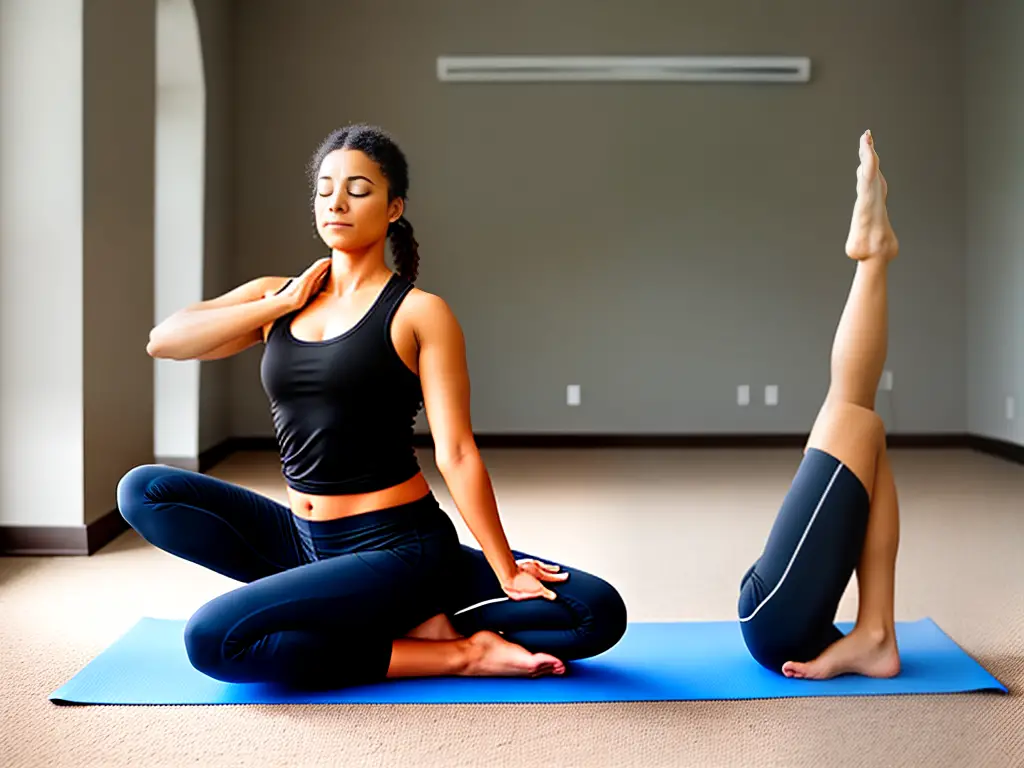
Strategies for Managing Arthritis and Knee Pain
Another crucial step to coping with arthritis and knee pain is practicing daily joint protection techniques. Being mindful of body mechanics when performing everyday tasks is important, such as using both hands to carry a heavy object or employing assistive devices like a cane. It’s essential to distribute the work evenly throughout your joints by using larger joints like your hip or shoulder some of the time, as opposed to consistently relying on smaller ones like your fingers or wrist. Adapting these habits can help reduce stress on affected joints, ultimately leading to a decrease in pain over time and promoting a smoother transition into daily activities.
Another key factor in managing arthritis and knee pain is staying active through low-impact exercises. Incorporating activities such as swimming, cycling, and yoga can help maintain joint mobility, strengthen muscles, and increase flexibility, all of which contribute to reducing pain and stiffness. If you’re not sure where to begin, consult with a physical therapist or certified trainer. They can create an individualized exercise program that targets specific muscle groups and builds up intensity over time. Always remember to listen to your body and adjust your activities accordingly.
Diet and maintaining a healthy weight play a significant role in managing arthritis and knee pain. Excess weight adds extra stress on your knee joints and may lead to an increase in pain and inflammation. Consuming a well-balanced diet rich in fruits, vegetables, lean proteins, and whole grains can provide essential nutrients that help manage inflammation, like omega-3 fatty acids found in fatty fish or antioxidants from colorful produce. Additionally, staying hydrated by drinking enough water throughout the day is vital for promoting total body health.
Managing emotional and mental well-being is just as important as addressing physical aspects when it comes to coping with arthritis and knee pain. Chronic pain can take a psychological toll, leading to feelings of helplessness, anger, or depression. Engaging in stress-reduction activities such as mindfulness meditation, breathing exercises, or spending time outdoors in nature can significantly improve mental resilience. Connecting with support groups, either in-person or online, provides a platform to share experiences, receive advice, and reduce feelings of isolation.
Another approach to improving the quality of life for those with arthritis and knee pain is to explore complementary therapies. Acupuncture, massage therapy, or the use of essential oils may provide temporary relief from pain and inflammation. It’s crucial to discuss any potential complementary therapies with your healthcare provider before beginning to ensure they are safe in conjunction with your existing treatment plan. Combining conventional medicine with alternative options creates a holistic approach to dealing with arthritis and knee pain.

Overall, understanding the link between arthritis and knee pain is crucial for individuals to manage and prevent these conditions effectively. By being aware of the knee’s complex anatomy, the various types of arthritis that may contribute to knee pain, and the strategies available for prevention, diagnosis, and treatment, people can take charge of their joint health and maintain an active lifestyle. Exploring alternative therapies and employing coping strategies and lifestyle adjustments will further enhance their ability to manage both arthritis and knee pain, allowing them to lead fulfilling and productive lives despite any limitations imposed by these conditions.














